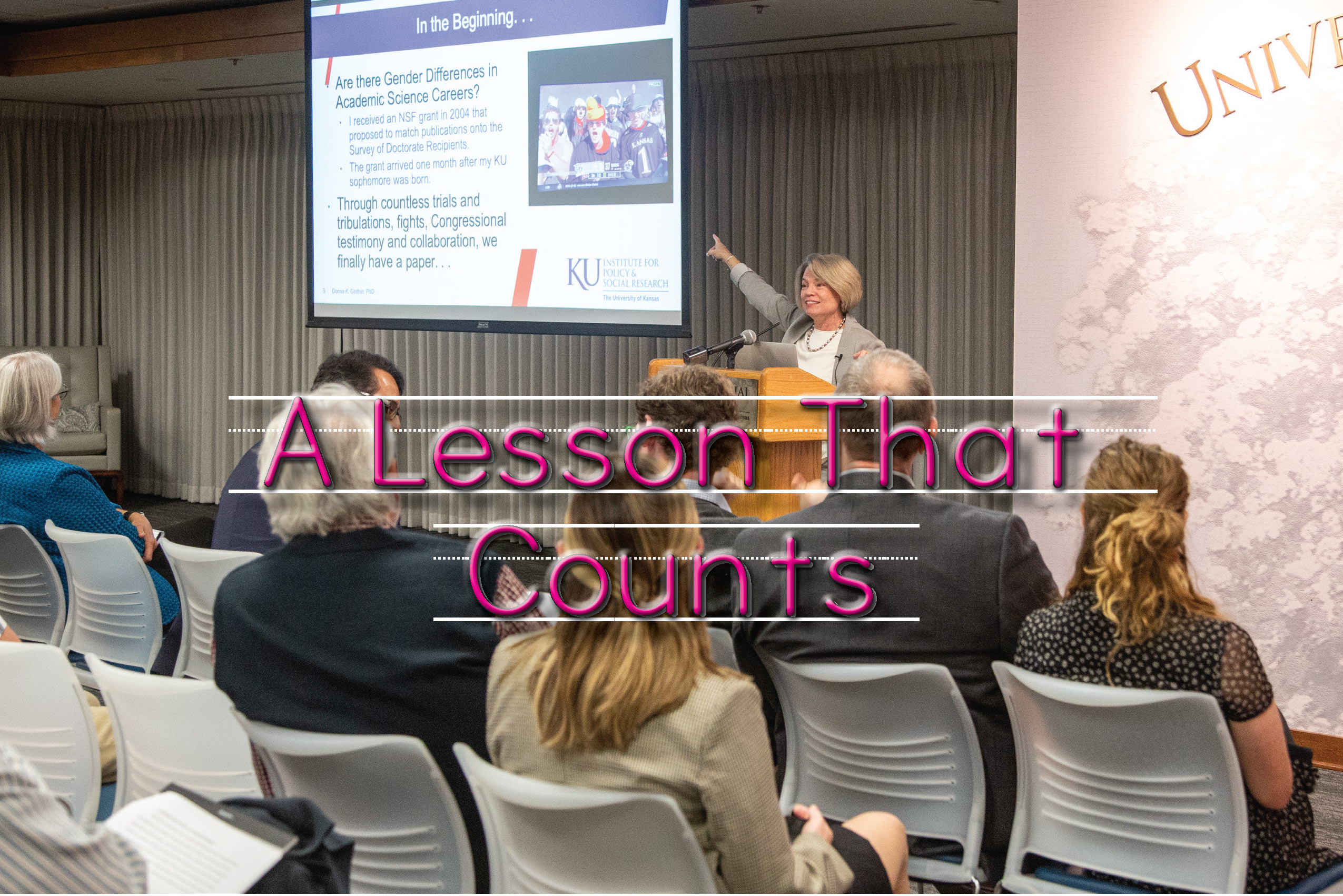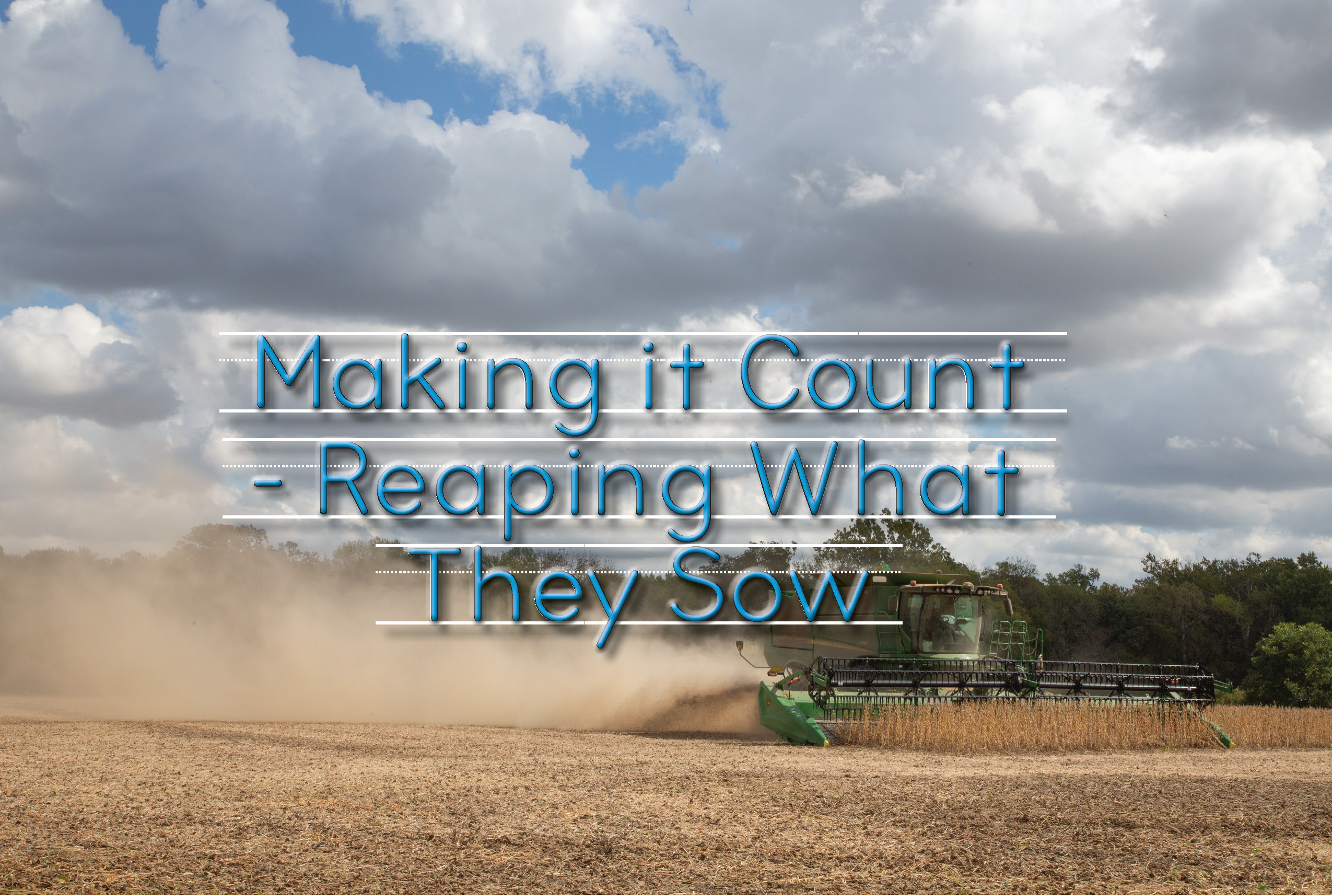| story by | |
| photos by | Steven Hertzog |
| OPEN A PDF OF THE ARTICLE |
KU professors explain math is not just a bunch of numbers but a language used to communicate using logic and critical thinking.
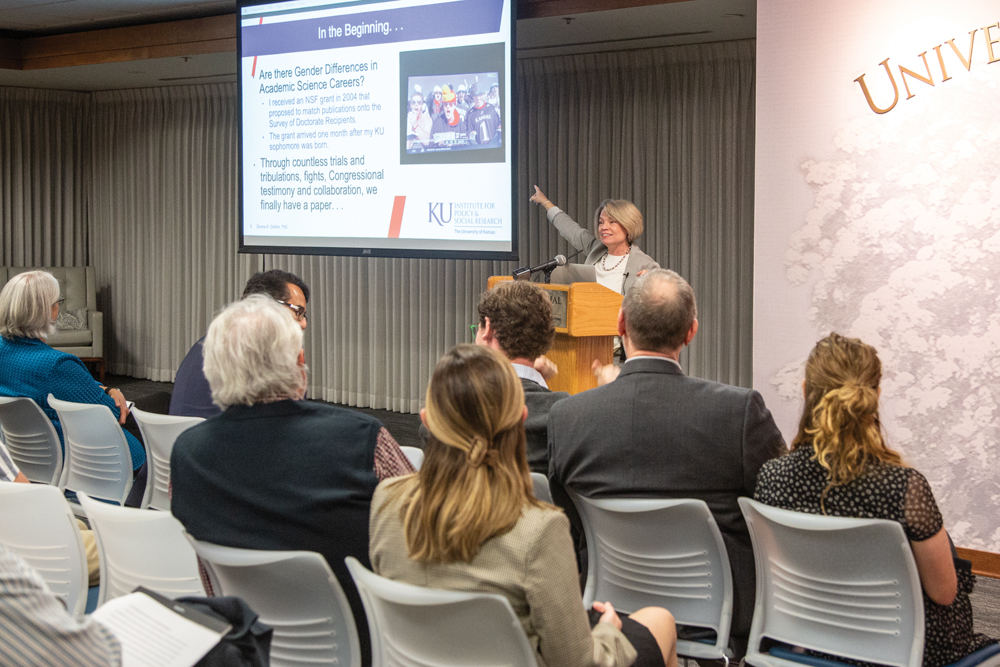
Donna Ginther, Distinguished Professor of Economics presents her public inaugural lecture “Turning the Research Lens on Ourselves: What do we know about Pay, Promotion, and Grants in the Academy?
What is math?
Math is complicated.
Math is equations.
Math is a set of consistent rules.
Math is an idea.
Math is a scary monster that teachers harbor in their classrooms to torture students.
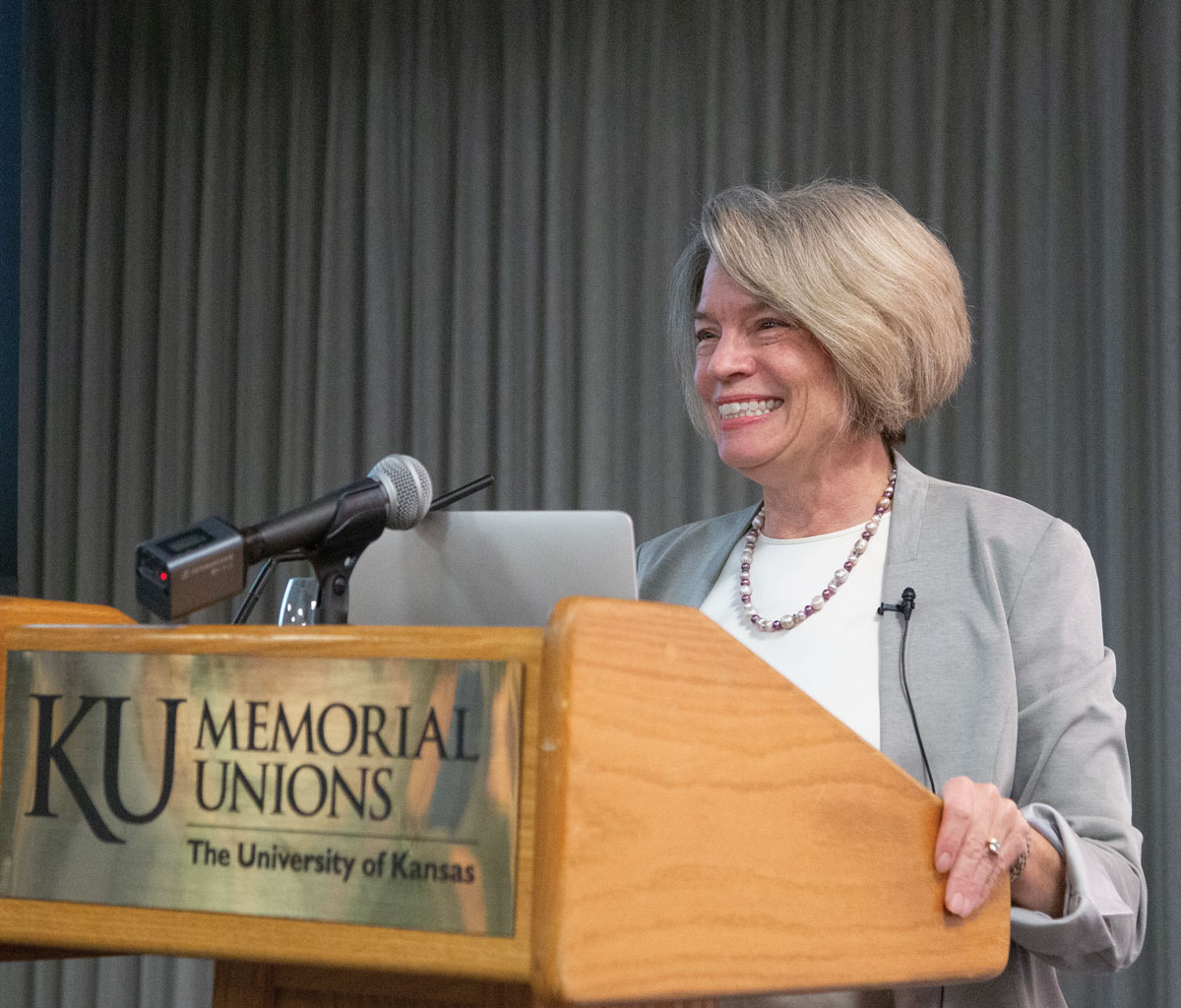
Donna Ginther, Distinguished Professor of Economics
We all have our own perceptions of math through our experiences and through what society has taught us about it. Fractions and basic operations like subtraction and multiplication show up in our daily lives, but what does more advanced, higher math even involve? And why does it exist?
Three professors from the University of Kansas (KU) simplify higher math and explain its purpose in their specialties. It turns out that higher math looks intricate and foreign, but often, its uses are right in front of us.
The Highest Levels of Math
LOCAL MATTERS
Our Local Advertisers – Making a Positive Impact
In short, regardless of which subject or discipline employs math, it is employed to explain things. Which types of things depend on the subject or topic someone is studying.
“Math is a language, and it’s a way to communicate an idea using a few symbols,” says Donna Ginther, the Roy A. Roberts & Regents Distinguished Professor of Economics at KU.
Using math to describe situations, questions and theories happens across the curriculum. Though there are many hard-and-fast rules in math, as we all know, the world is an ever-changing place where events don’t always occur the same way twice. We need math there to account for things that might change unexpectedly.
“Mathematics is not about numbers. Mathematics is about logical and critical thinking,” says KU Professor of Mathematics Bozenna Pasik-Duncan.
In a similar way to when a verbal disclaimer is applied to an agreement, math can function as a disclaimer to other factors that may affect a situation. And in fact, math can be the better method for describing what is occurring.
“Words very rapidly hit their limits. At some level, you hit the wall that analogies can describe, and you have to go to the math,” says Gregory Rudnick, KU professor of physics and astronomy.
So at the highest levels of math at a university, students, professors and researchers are using math to communicate ideas, questions and solutions with one another. Math can prove or refute ideas; it can enhance or reduce complicated situations; it can show, and it can tell.
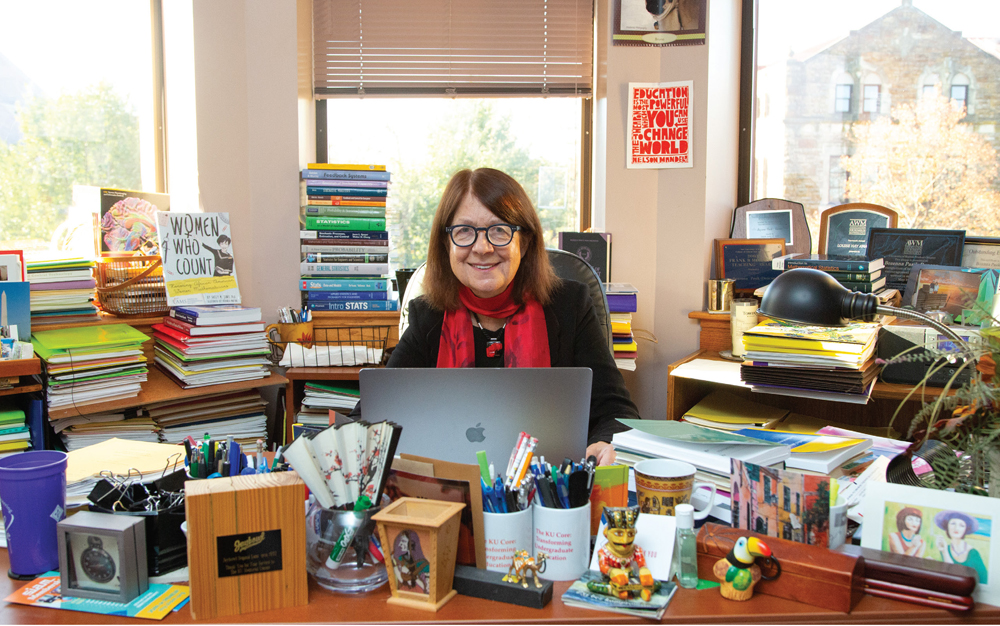
Bozenna Pasik-Duncan, KU Professor of Mathematics
How Does Math Escalate?
Basic statistics that one might learn in high school math assume a level of control of the situation for which you are calculating the statistics, Pasik-Duncan explains. At that level, we do calculations for situations that we can see and get our arms around if we counted each data point or item: how many people answered the survey or the amount of each color of M&Ms in a bag. There might be some unknowns, such as some people who answered most but not all of the survey or the potential for the M&M packing machine to misfire and be inconsistent. But the equations we use assume a level of control so that we can learn how to calculate. Taking those statistical calculations to the next level introduces and incorporates the unknowns.
“I believe in randomness; I don’t believe everything is deterministic. Measurements have errors, and equipment has some possible failures, so you have to take that into account. You cannot say exact every time—this is the randomness,” she continues.
Math is necessary in astronomy for many of these same reasons of randomness and the unknown, plus other unique challenges. Rudnick says someone cannot actually directly measure the size of a star, for example. So to find out how big a star is and what its absolute brightness is, astronomers must measure the distance of the star and use angles and triangles to determine its size.
“Math is a way of optimizing things. It can be bare bones or super abstract,” he adds. “We revisit the same concepts in increasing depth by building on the algebra base with calculus; this lets us solve increasingly complicated problems.”
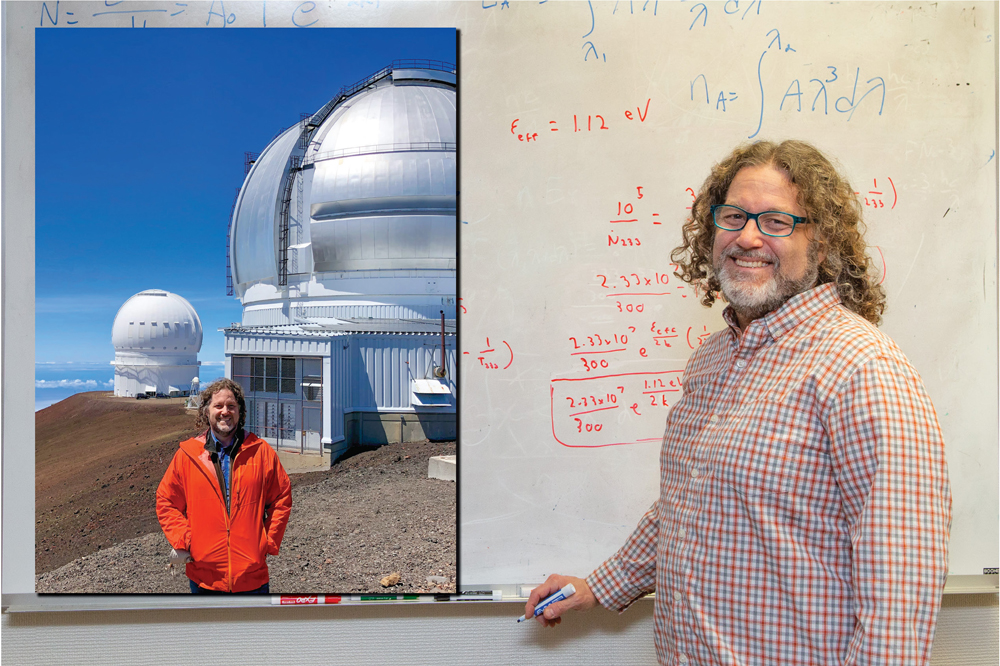
Gregory Rudnick, KU Professor of Physics and Astronomy; Greg at Mauna Kea Observatory in Hawaii at 14,000 feet
Speaking the Math Language
As when speaking any language, math in these disciplines and at this level can tell a story when it flows down a path or connects ideas. Those types of scenarios lead to inventions or advances in technology of materials, processes and programming.
“Most people don’t think like an economist, and they’re not persuaded by a graph. It’s important for me to understand that not only is it data or numbers, but it has to be made accessible with a narrative,” Ginther says. “I ask my students, ‘What’s your story?’ That is part of their scholarly communications.”
Pasik-Duncan also requires her students to articulate the meaning of their calculations and explain their reasoning in words.
“You have to be critical,” she says. “I always say, ‘Make the case like a winning case in court.’ You have to start with the data, but if you’re not a mathematician, you don’t get the data yourself. If you have outliers, you have to exclude some outliers.”
Once students are fluent in the math and become accustomed to using math as a communication tool, all three of the professors agree it can feel like it’s easier not to have to explain it—making it tempting to take shortcuts.
“I often have students write out their steps in their homework. I want them to explain what they’re doing in words and not just show the math,” Rudnick says. “Doing research, you get thrown a bunch of stuff, and you have to decide what’s important. There is no right answer—you are finding the right answer. Research is tackling some problem that no one has ever done before. This can be challenging for students at first.”
Pursuing Research Using Math
Disciplines like economics, physics and engineering involve both research that incorporates math and research that is about the math itself. The higher levels of questions involve accounting for increasing numbers of unknowns, but it is important to allow the data to create itself and exist separately from what your ideas and hypotheses might be.
“There’s an ideation part. I always have a theory in mind when I go to the data. We need to have a model of how the data should behave. We use that to understand which aspects of the data are causing the outcome that we want to study,” Ginther says.
In order to interpret the data, the researcher must establish a mathematical model into which he or she must input the data and see how it behaves. Even the most basic mathematical models must account for unknowns or outside forces.
“We use modeling, but we also discuss how nonmath people will not use modeling—they use ‘white noise,’ so then the ‘noise’ is modeled,” Pasik-Duncan says. And that is how mathematics is ever-changing, because as the models evolve, the possibility for error from outside the models also evolves.
Math is continual critical thinking, deciding which factors are the most important to the research or the problem, and which do not apply or have an effect in the situation. Rudnick says not only is mindset helpful outside of mathematical disciplines but in the rest of life, as well. “How do I make decisions based on complex information? How do I gauge certainty or uncertainty?” These are the types of questions that can be answered while studying physics and astronomy, he adds.
Applying those ideas in astronomy, Rudnick has students combine a star’s luminosity and temperature to determine the age of the star. Of course, there is a lot unknown about the star, but students can take all the traits of stars, including their brightness, and decide which aspects of the traits apply to the star in question. From there, they can make an informed guess about the star’s age. There is a story in words that can be told about the star, and that story is furthered by the math applied to it.
Ginther’s current economics research similarly has a narrative that can be explained in words and then is both detailed and solidified with the math. She has been looking at the connection between people who work in teams in academic research and their subsequent career outcomes—how much does the size of the academic researcher’s team affect his or her individual career outcomes from that research? So far, her findings are that the bigger the team the researcher is a part of, the lower his or her chances of getting an academic job. It is difficult to identify the individual’s contributions to that research. This paragraph explains that research in words, but of course, there is math that describes the research in more specific detail.
Math Gets a Bad Rep
All three professors are plenty aware that there are many purported “math haters” out there. They hear the jokes and commentary of people who don’t understand the need for certain types of math being required in high school and believe most people won’t actually use that math in their lives. And they are each genuinely troubled by that perception.
Pasik-Duncan is the faculty adviser for KU’s chapter of the Association for Women in Mathematics and KU’s coordinator for Mathematics and Statistics Awareness Month in April each year. She is a tireless advocate for math and all of its applications, but also for mathematics as a place of solace from the challenges of the world. She has helped establish annual math competitions at KU for students in grades 3 through 12 to discover that the fun of math and the challenge of math can go hand in hand.
Rudnick says people have the common preconception that they are not good at math. He thinks much of that is connected to the quality of math teachers in their early school years, saying good math teachers earlier on is “hugely beneficial” to students’ general opinion of math.
For her part, Ginther says avoidance of math prevents women from participating in STEM (science, technology, engineering and math) majors, and teacher biases against girls doing math are at least partly to blame. This year’s Nobel Prize in Economics winner, Claudia Goldin, researched reasons for women’s growth as part of the labor market in the United States and found sources for why gender gaps remain. Ginther says that as a result of Goldin’s research, we still have work and change to do about how we teach math and approach math for girls and young women.

